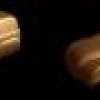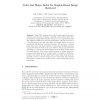58 search results - page 4 / 12 » Learning Invariant Visual Shape Representations from Physics |
COGSCI
2010
13 years 7 months ago
2010
Abecassis, Sera, Yonas, and Schwade (2001) have shown that young children represent shapes more metrically, and perhaps more holistically, than do older children and adults. How d...
VIS
2007
IEEE
14 years 8 months ago
2007
IEEE
New product development involves people with different backgrounds. Designers, engineers, and consumers all have different design criteria, and these criteria interact. Early conce...
CVPR
2008
IEEE
13 years 9 months ago
2008
IEEE
We consider the problem of visual categorization with minimal supervision during training. We propose a partbased model that loosely captures structural information. We represent ...
IWVF
2001
Springer
13 years 11 months ago
2001
Springer
Abstract. Most CBIR systems use low-level visual features for representation and retrieval of images. Generally such methods suffer from the problems of high-dimensionality leadin...
NIPS
2007
13 years 8 months ago
2007
Brain-Computer Interfaces can suffer from a large variance of the subject conditions within and across sessions. For example vigilance fluctuations in the individual, variable ta...


